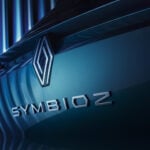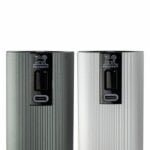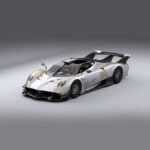The new Lexus RZ crossover is an electric driver’s vehicle that focuses on responsive driving dynamics as well as everyday utility.
The dynamic-style mid-size offering, unveiled online, launches a new design look for the premium Toyota brand and foreshadows a wave of Lexus electric vehicles on the road.
“RZ is the immediate proof of the transformation that is taking place at Lexus,” said Lexus President Koji Sato. “Electrification means maximizing the vehicle’s potential through electrified technology.”
“Fast acceleration, precise braking and safe handling will all be the hallmarks of Lexus.”
The 2023 RZ 450e will go on sale in October, first in China and Europe, then in the US and Japan.
The futuristic counterpart of the venerable Lexus RX crossover rides on the same e-TNGA dedicated EV platform as Toyota’s future bZ4X SUV.
But RZ is more exciting compared to both RX and bZ4X.
For starters, the Lexus EV targets a time of 0 to 100 km / h of 5.2 seconds. It is more than a second faster than the all-wheel drive version of the bZ4X and not too far from the 3.7 seconds timed by the Lexus LFA sports car.
RZ easily beats the petrol and hybrid versions of the RX.
RZ’s extra power comes from a twin-engine configuration that pairs two new electric axles developed by Toyota Group Aisin – a 150-kilowatt engine at the front and an 80-kilowatt one at the rear. The resulting power is 230 kilowatts, or 308 hp, and far exceeds the maximum power configuration of 214 hp in awd bZ4X with two engines.
Instead, the Lexus UX 300e, an electric version of the standard petrol or hybrid version of the compact crossover, receives only a single 150-kilowatt engine.
Lexus signature
A compromise comes in the battery range.
RZ is expected to deliver about 399 km at full load, Lexus said. This figure is calculated in accordance with the global harmonized light vehicle testing procedure, which is considered more generous than US EPA calculations. EPA figures for RZ are expected to be approximately 362 km.
For comparison, the front-wheel drive version of the bZ4X receives an EPA rating of 400 km, while the awd version of the bZ4X is approximately 366 km according to US rules.
In RZ, a Direct4 all-wheel drive train is the only thing offered.
The awd configuration is different from the bZ4X. RZ uses a unique Lexus logic to control the torque distribution between the front and rear wheels, depending on road grip conditions. By balancing this split front-rear torque, the RZ offers more direct and safer handling. And it slows down the vehicle for smoother, more linear acceleration and braking.
The finer feel is the key to the driving dynamics that Lexus is trying to cultivate in order to differentiate its vehicles from the rest of the group in the age of electrification. It’s called the Lexus Driving Signature.
Lexus has fine-tuned RZ’s driving dynamics on its new “mini-Nürburgring” test track in the mountains outside of Toyota, Japan. Lexus will move its global headquarters to Toyota Shimoyama Technical Center in 2024.
“Driving is the most important thing for Lexus,” said Takashi Watanabe, a former chief engineer of the Lexus LC sports coupe, which now runs the brand’s electric battery program.
Electric ambitions
RZ will be produced at Toyota City’s Motomachi assembly plant on the same line as the bZ4X and a sister EV on the same platform, the Subaru Solterra.
While the bZ4X will get its batteries from both the Chinese battery giant CATL and the Japanese company Prime Planet Energy & Solutions, a joint venture between Toyota and Panasonic, RZ will only use Prime Planet packages. Lexus engineers said it performed better, but did not explain how.
RZ plays a key role in Lexus’ goal of becoming an all-electric brand in Europe, the US and China by 2030, when it expects to sell 1 million electric vehicles a year. By 2035, the brand aims to be ready to sell only fully electric vehicles worldwide.
Pushing makes Lexus the vanguard of electrification at Toyota, as the Toyota brand continues to work with internal combustion, hybrids and hydrogen fuel cells.
But the Lexus has a long way to go to run out of gas. Its global sales of all-electric vehicles – based exclusively on the UX 300e – rose to just 5,800 last year. Sales of the new RZ are expected to be only about 33,000, at least in the beginning, with China being probably its largest market, with sales of 1,500 per month.
Lexus has monthly sales of approximately 439 vehicles in North America and 584 in Europe, where regulators are imposing more aggressive electric vehicle targets.
exterior
Tomorrow’s Lexus designs will feature an ultra-low center of gravity and other performance-enhancing modifications, such as a board that increases aerodynamic strength and increases aerodynamics.
The embodiment of the new Lexus look is BEV Sport, a vehicle that is inspired by the LFA, the $ 375,000 Lexus sports supercar that was discontinued in 2012, after a series of only 500 copies.
Lexus provides electric reincarnation with a range of 700 km and a time of 0 to 100 km / h in a short two-second interval.
The designers have given up the term “shaft grid” in favor of the “shaft body”, which, they say, conveys its 3D shape and the new proportions of the EV body. In the RZ, it includes a duck tail-shaped back for smoother airflow.
When viewed from certain angles, RZ’s C-pillar almost disappears from view as the rear pinches inward, creating the illusion of a sedan silhouette with a rear axle.
Two horn-shaped roof spoilers protrude from the rear corners. They have two jobs. The first is to break the outline of a coupe and present a more square roof line. The second is to suppress the force of the cross wind and improve the stability of the vehicle.
Focused on the driver
Inside, the RZ clings to a driver-focused cockpit, rather than adopting the minimalist horizontal digital panel, which is currently in vogue among electric vehicle designers.
There are still a lot of buttons, and the dashboard display is similar to that used for the NX 450h + plug-in hybrid, although RV designers have moved the vents above the screen. The center armrest of the armrest surrounds the driver.
Lexus calls the appearance a Tazuna concept, evoking the Japanese term tazuna, for the reins that a rider uses to control a horse. It’s part of Lexus’ mission to create a more direct connection between driver and car for a sense of intuitive control.
Even though the RZ will be the first Lexus to receive a drive-by-wire in a yoke-shaped steering wheel, the base model will stick to a traditional donut-shaped wheel.
RZ will also offer a panoramic roof that extends over the rear passenger seats, which can enjoy ample legroom due to RZ’s long wheelbase.
In the meantime, over-the-air updates will keep your vehicle software perfectly up to date. Lexus has also replaced the mechanical door lock with an “electronic lock” for more effortless entry. And a smartphone-compatible digital key can be shared with friends.
Finally, the vehicle contains the latest version of the Lexus Safety System +, the brand’s suite of safety technologies and driver assistance. It will also receive Lexus’ first adoption of a traffic jam assistance feature.
The only thing RZ won’t have is a glovebox on the passenger side. Planners have given up on this to adopt radiant leg warmers and front seat legs. Lexus says the new configuration heats passengers more directly, without wasting energy to heat the entire cabin.

 Renault’s compact family SUV will be called the Symbioz -.
Renault’s compact family SUV will be called the Symbioz -. Peugeot and its new range of salt and pepper mills -.
Peugeot and its new range of salt and pepper mills -. A new Uber Eats ad is being criticized for showing a peanut allergy -.
A new Uber Eats ad is being criticized for showing a peanut allergy -. Pagani announces new track-based hypercar, known as the Huayra R Evo -.
Pagani announces new track-based hypercar, known as the Huayra R Evo -. Introducing the Oscars in the Best Casting category -.
Introducing the Oscars in the Best Casting category -.